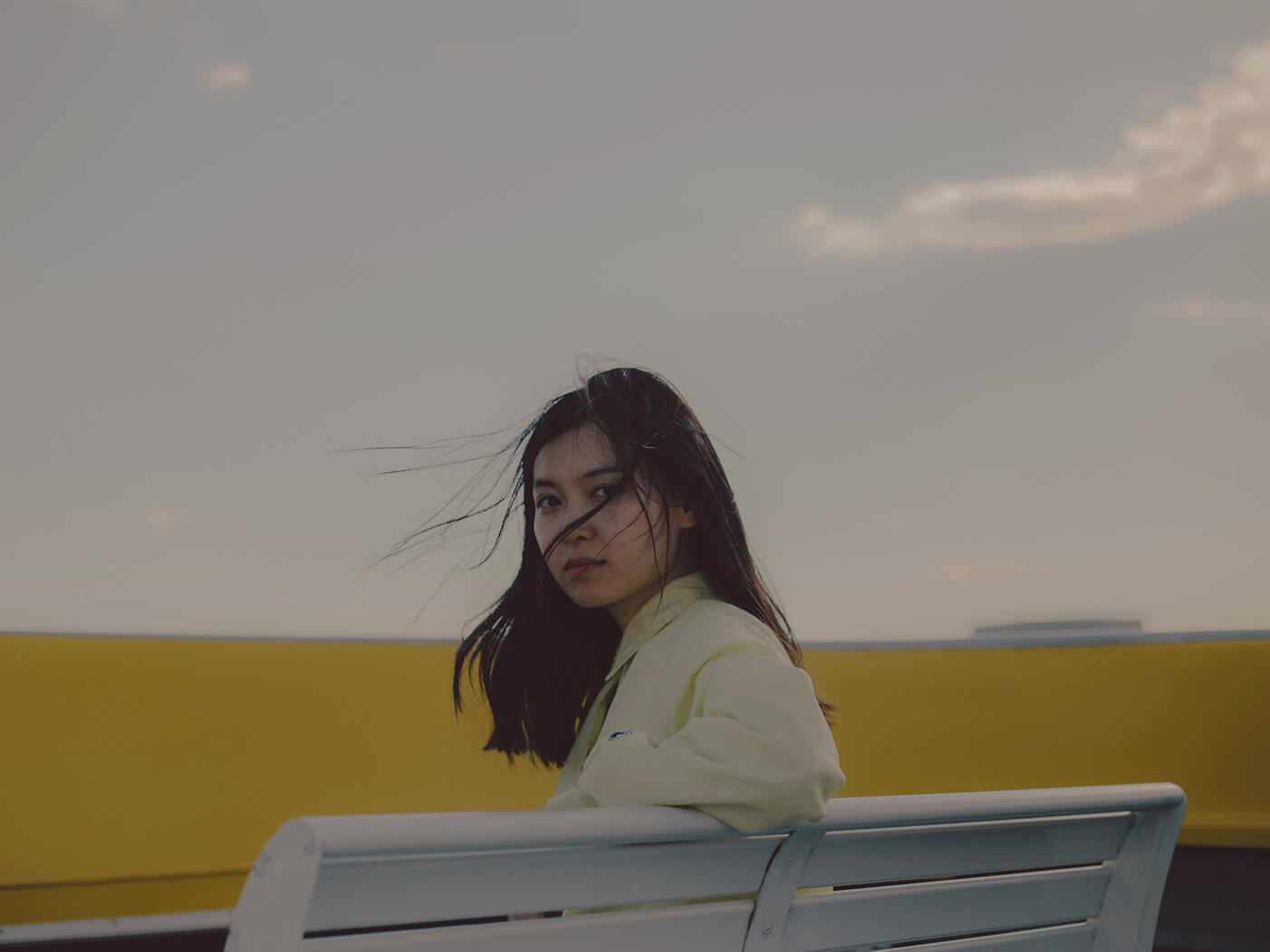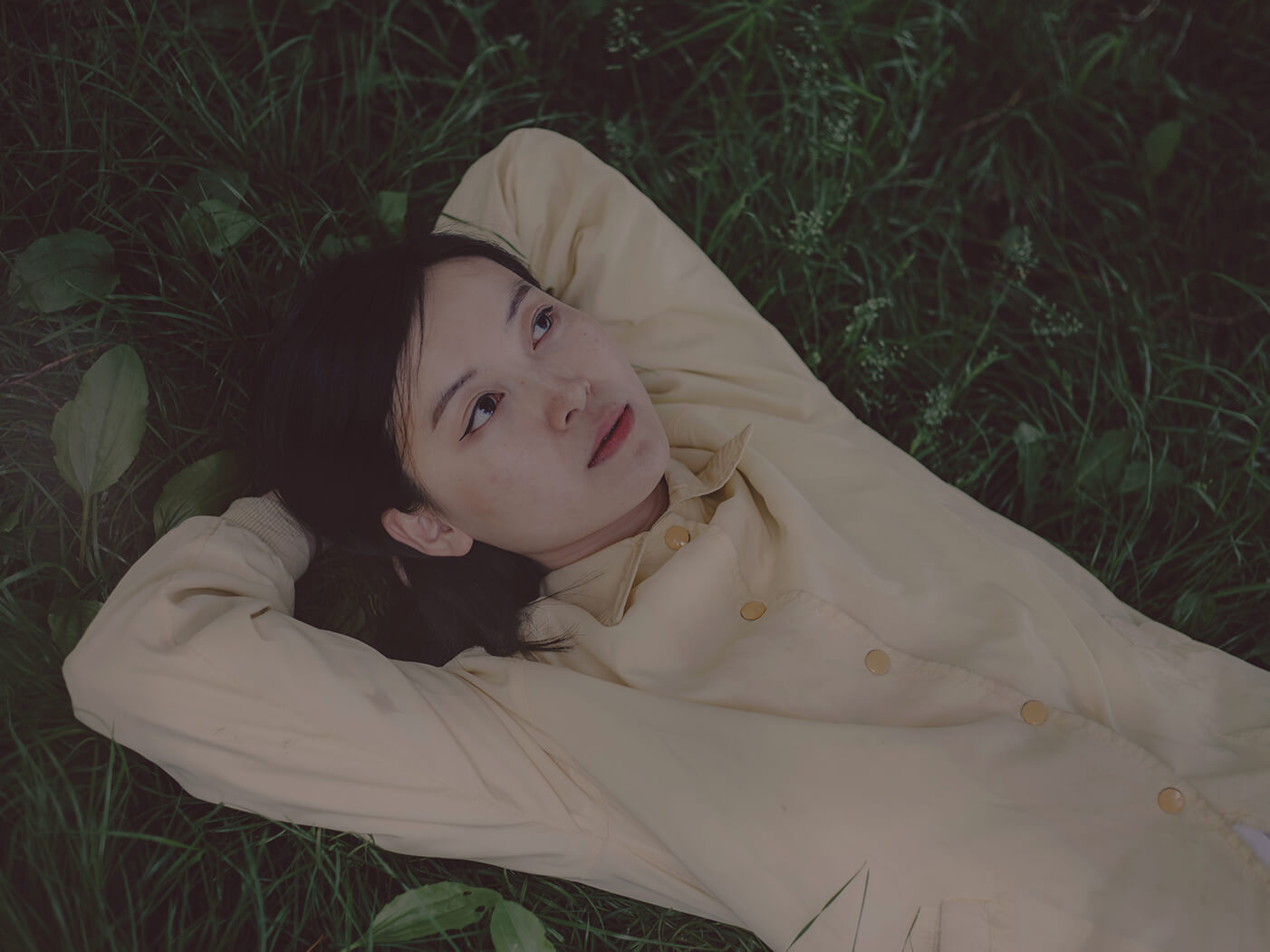Meet Long Beard, dream pop’s rising star who explores nostalgia on new album Means To Me
Rising musician Leslie Bear talks collaborating with Japanese Breakfast producer Craig Hendrix on her sophomore record.

Image: Nathan Bajar
In the four years since her debut album Sleepwalker, Leslie Bear – aka Long Beard – has toured as a bassist with Japanese Breakfast, moved back home to New Jersey and secured a full-time job in software development. It was during this period of transition that the dream pop artist found room to experiment with her guitar style, leading to her sentimental and nostalgic new record, Means To Me.
On the album, due to arrive on 13 September, Bear navigates uncharted territories, using vintage gear, modulation stompboxes and layered lead lines to conjure new textures and soundscapes. Means To Me isn’t as straightforward a listen as her debut – Bear tells us why.
When did you start playing the guitar?
I started playing when I was 15 years old. My friend had a really cheap Squier Stratocaster lying around and she never played it, so she let me borrow it. After that, I saved up and got a – still cheap – but a little better Ibanez guitar. It looked really metal. Then I started out looking at guitar tabs online. I remember the first song that I learned how to play using guitar tabs was Nirvana’s Smells Like Teen Spirit.
How did you start honing your own style of playing?
I guess pretty quickly after I started learning how to play guitar tabs. I got a feel for it, and I just kind of started figuring out chords that I liked and started writing some songs. For a while, I played in standard tuning with a guitar pick.
And then when I was around 18, I think, I started to play in alternate and open tunings. I kind of abandoned the pick and started fingerpicking, which I felt like was a lot more natural for me – and with the different tunings, it really helped me express the kind of music I wanted to make. It opened up more possibilities for what I could create.
Your lyrics explore a lot of nostalgia. How much do your lyrics and your guitar tone influence each other?
I generally think that especially playing more open chords and experimenting with alternate tuning really helps with that kind of dreamy, nostalgic soundscape. Everything kind of sounds more magical or has a lot more overtones to it. It definitely helps with the dreamy sound I’m trying to create.
What sort of pedals and effects do you use to create that dreamy sound?
For a while, I mainly relied on this one pedal that was the Electro-Harmonix Memory Man Deluxe, with Hazarai. It’s a digital delay pedal and it has a bunch of cool features like reverse echo, tap delay and echo. I mainly started using that for looping, which really helps me layer certain textures and melodies on top of one another.
And with that pedal, I could reverse the loops that I made which just kind of automatically creates a certain soundscape that’s kind of more drone-y and ambient. That sort of sound is something I’ve always been drawn to and that really helps with my creative process as well.
What differs between your first album Sleepwalker and your new one, Means To Me?
I feel like with Means To Me, I definitely experimented a lot more, especially with adding different guitar parts. I wanted to use or have at least two guitars, and I wrote two or three guitar lines for a lot of songs and also experimented with tone. I used more distortion and I wrote a lot of guitar leads – for that, I used the bridge pickup on this Stratocaster from the 60s that Craig [Hendrix], my co-producer, had that gave it a really chime-y tone. It just really cuts through the mix well.
What was it like collaborating with Craig?
It was great. He played the drums and bass for all the songs. I played all the guitar parts but he helped me get a good tone by trying a bunch of different amps. We had probably four guitar tracks from different amps and guitars for each guitar part at some point, and narrowed it down to the one we thought blended well.
He just had a larger arsenal of guitars and amps to use than I do! He had a Fender Twin Reverb, which we mostly used. We also used my amp, a Fender Blues Deluxe, for some things. He also had an old Selmer amp – I think it’s from the 50s, and it had a cool feature that we used for the rhythm guitars in Sweetheart.
Which part of Means To Me really sticks out in your memory?
One of the main things that really still sticks out to me is the lead guitar in Sweetheart. I used Craig’s vintage Stratocaster and the bridge pickup, which had like this perfect kind of chime-y tonality that I thought was really fitting for the song and so excited about that. For the lead guitar that comes in at the end of The Last, I just cranked the distortion on my RAT pedal. It’s an older RAT pedal from the 90s. It has a specific kind of tone that really just solidified how I wanted the record to end.

What’s your home setup like?
I have a Fender American Deluxe Telecaster that I bought around 2008: that was my first real guitar that I saved up for like by working all summer, full time. I wasn’t intentionally setting out to buy that specific guitar but there was a Fourth of July sale and I just thought like, “You know, like this is the guitar for me.” That’s still my main guitar.
It was really lucky that I ended up getting it because later on, when I started experimenting with alternate tunings, I found that because that guitar has a hard-shelled bridge, the strings stay in tune even if I tune it lower or higher.
Then I have my Fender Blues Deluxe amp that I also used to play out but since it’s really loud, I usually play through a much smaller amp. Then I’ll run everything through Ableton to record and demo.
What’s your live setup like?
With the setup I have now, I rely a lot on the RAT for distortion. I also have a chorus/vibrato pedal from Walrus Audio; it’s called the Julia pedal. That’s been a lot of fun for me and really helps me create warmer tones, which is also another feature on the new record that wasn’t on the last. I used that pedal a lot and integrated more chorus and vibrato into my sound. I also have a Strymon tape echo pedal called El Capistan that warms everything up and adds a lot of texture when I need it.
You’re now touring as a four-piece band. Does that allow you to play around more?
I definitely used to play a lot solo, but I did also play as a three-piece band around the time of the last record. Playing as a four-piece band now really makes everything sound a lot fuller. We can all perform the songs as I wrote them and express more of the different melodies and textures. Even just knowing that there’s another guitarist, I feel like I have more freedom to play certain guitar lines that maybe I couldn’t before.
Is there anything that you’re excited to explore with your techniques in the future?
I don’t consider myself the most advanced guitarist. And because I have been relying on fingerpicking in the past, I still do that a lot, but I’ve also been leaning towards using a pick again and writing more. Just using more lead guitar lines that are a little more abrasive to offset the ambient sound that I have.
I just feel like the pick really helps the notes cut through a lot more, and just gives it that sharper texture that is really present. Whereas if I were to use my fingers, it’s more of a soft mellow sound, you know? So I’ve just been going back and forth with those two now whereas before, I was mostly using my fingers – everything sounded really mellow and warm. But I like the contrast.
How would you describe the guitar on Means To Me?
I would say a lot of it is definitely pretty warm and clear. I feel like the guitar tones sound like water or like kind of ‘slippery’. Then other times the guitar sounds more like chime-y bells or sad wailing banshees!
Means To Me is out 13 September via Double Double Whammy.
